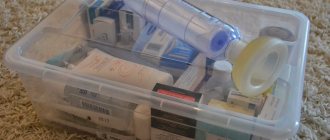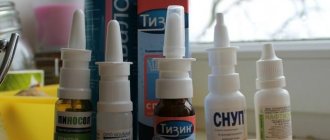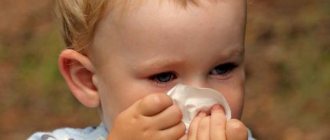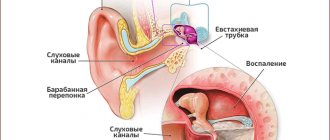The quality of life of a child with nasal congestion is greatly deteriorated. If the swelling is not removed in time, then difficulty breathing over time can cause the baby to lag in development, because in order to stimulate the brain, it is necessary to breathe through the nose.
Nasal congestion can be a consequence of the penetration of bacteria and viruses into the body, the development of an allergic reaction, or the entry of a foreign object into the nasal passages, which a curious baby thrust into the nostril. A child with difficulty breathing through the nose should be examined by a doctor. He will find out the cause of the disease, after which you can begin symptomatic treatment using pharmaceutical drugs, folk remedies, inhalations, etc.
Causes of nasal congestion in children
Why does a child stop breathing through his nose? The fact is that when the nose is stuffy, the mucous membrane of the olfactory organ becomes inflamed. And there are several reasons for this unpleasant phenomenon. Among the most common is the common cold. If parents see that their child has a fever, then in most cases this is the cause of nasal congestion and runny nose. It could also be ARVI, influenza. But if the child does not have a fever, but the nose is stuffy, the cause of this phenomenon may be an allergen.
Many children experience sneezing, mucus discharge from the nose, and coughing in response to a variety of irritants. Including animal fur and plant pollen. It happens that a child at the dacha climbs into the raspberry bushes and enjoys the berries, and after a while appears in front of his parents with a stuffy nose and even a cough. Although the bush does not bloom at this time, this means there is no pollen. But something has become an allergen for the child. Causes of nasal congestion may also include:
- Adenoid growths;
- Polyposis;
- Onset of viral rhinitis;
- Deviation of the nasal septum;
- Reaction to a drug;
- Drying of mucus in the nose. Only adults should blame themselves for this. This means that in the room where the child most often stays there is an insufficient level of relative air humidity. Then if it is moistened according to sanitary standards, the child will not have nasal congestion;
- Inflammatory diseases of the oropharynx;
- Genetic predisposition. If one of the parents has an abnormal structure of the nasal septum, then it is possible that the baby may also inherit it;
- In infants, teething often causes nasal congestion;
- Uncontrolled use of vasoconstrictor drugs and other, less common causes.
If a child has a stuffy nose, the wisdom of the ancestors will help
Speaking about a non-medicinal method of treating nasal congestion in a child, you can resort to folk remedies. Many of them were also treated by our mothers and grandmothers.
Here are some simple, effective recipes:
- Warming up the nose. You can use salt or chicken eggs. Place two hot boiled eggs on both sides of the nose and warm the nose until the eggs cool down. Or heat dry sea salt in a frying pan, then pour it into a handkerchief and warm your nose for 10 minutes. This folk remedy for nasal congestion will relieve swelling.
- Rinse with sea salt. Dilute one teaspoon of salt into one glass of warm water. Every 3-4 hours, rinse the sinuses with this solution, washing the sinuses of mucus.
- Nasal drops: squeeze the juice out of aloe, a few drops will be enough, and dilute it in equal proportions with warm water. We instill this solution into the nose several times a day. It is advisable to apply a new solution of aloe juice each time. You can also use onion drops.
What do you do when your child has a stuffy nose?
Possible complications
If nasal congestion does not go away for several days, then you need to seriously pay attention to the baby’s health. Because such a manifestation of the body’s reaction indicates that there are some deviations, there is a malfunction in the perfect functioning of our organs and it needs to be found and cured. In case of prolonged nasal congestion, complications may even arise:
- Constant headache.
- Pharyngitis.
- Sinusitis.
- Acute inflammation of the middle ear.
- Weakness.
- Hearing impairment, hearing loss.
- Depression or, conversely, irritability.
- Vegetovascular disorders.
- Loss of partial or complete sense of smell.
- Asthma.
- The appearance of microcracks in the nasal mucosa, which in the event of a viral or bacterial infection can serve as a place for incubation of harmful microorganisms and the beginning of an extensive inflammatory process.
- Changes in the shape of the skull, malocclusion.
Treatment
If nasal congestion is detected, the child simply needs to be shown to a specialist. At the same time, you need to tell the baby that there is no need to blow his nose if there is no mucus, because when he tries to blow his nose out of non-existent snot, the blood vessels burst. The swelling of the nasopharynx increases, and this action worsens the situation.
A handkerchief is used only when there is a lot of mucus and you need to blow your nose. Trying to do this with congestion without snot is not recommended.
Before treatment, you need to make a correct diagnosis. The doctor will do this after a cytological smear of the mucous membrane. Otoscopy, rhinoscopy and mesopharyngoscopy may be offered. If there is an urgent need, they will refer you for an X-ray of the paranasal sinuses and a computed tomography scan. All this is completely painless and a little financially expensive. But, keeping in mind the complications that may arise is all that the specialist requires to be done.
Medicinally: good medications and sprays
Drug treatment is carried out when the cause of nasal congestion is determined. For allergies, vasoconstrictors Tizin, Sanorin, Rinazolin, Galazolin are used. It is recommended to use no more than five days. Because the longer the application process, the more addictive it becomes and soon it will be impossible to do without drops.
For infants use Nazol Baby, Nazivin (0.01%), Aquamaris spray.
Antihistamines (Vibrocil, Histimet and others).
Average price 300 rub.
Protargol relieves inflammation well, has a vasoconstrictor and antiseptic effect. Just before use, the baby needs to rinse the nose with physiological or saline solution. And then drop two drops of Protargol into each nostril.
Improves blood circulation and has a positive effect on the vital processes of the respiratory system, rubbing with ointments helps cleanse it. Among which, for example, Doctor Mom is in great demand.
The ointment contains camphor. Therefore, you should not rub your back or chest in the heart area.
Preparations based on sea water Solin and Aqualor also moisturize the mucous membrane. They need to be used to rinse the child’s nose.
Folk remedies - drop recipes
Folk remedies will help restore the process of breathing through the nose and remove congestion. They have almost no side effects and are well tolerated by children.
Aloe juice is good for unblocking your nose. To prepare it, you need to take the bottom leaf of the plant, grind it, and squeeze out the juice. Add an equal amount of warm boiled water and drop 3-4 drops into each nostril.
Aloe juice can also be instilled, after combining it with the same amount of natural high-quality honey.
Fresh borscht (burgundy) beet juice helps a lot. Dilute a few drops halfway with boiled water and drop three into each nostril. If the child is over 12 years old, the juice does not need to be diluted.
Mix freshly prepared aloe, celandine and linden honey in equal proportions. Place up to five drops into each nostril at least five times a day.
Mix two tablespoons of aloe juice and one tablespoon each of knotweed, kalanchoe and onion juice, strain and drop 5 drops into one nostril. Lie on your side for half an hour and put drops in the second.
Buy bee honeycombs at the market and cut off narrow “turundas” from them. Insert into each nostril in turn. Leave in one for about 4 hours. And then the same amount in the second.
Mix sea buckthorn oil, honey and propolis in equal quantities. Place in a water bath until the propolis is completely dissolved. Soak a cotton swab in a warm solution, squeeze it out and insert it into the nostril.
You can take a head of garlic and break off all the cloves. A piece of dry stem will remain inside. Light it on fire and inhale smoke through each nostril in turn.
Inhalations
Will help cope with nasal congestion and inhalation:
- Heat the propolis in a steam bath and inhale the steam.
- In a glass of hot water, stir a teaspoon of soda and drop a few drops of fir, thuja, and mint oil. Inhale the vapors with your nose.
- St. John's wort or string herb (a tablespoon) is steamed in a glass of water. Breathe over the container with this tea.
Washing
Nasal rinsing allows you to remove the remains of pathogenic escudate from the nasal cavity.
- Dissolve a teaspoon of calendula or eucalyptus tincture in half a liter of slightly salted water. Pour into a shallow container. Suck the solution through your nose and out of your mouth.
- Rinse your nose with saline solution or saline solution made yourself. To do this, dissolve half a tablespoon of table salt in a liter of warm boiled water.
Warming up
Warming the nasal sinuses allows you to liquefy purulent accumulations. But it is important to consider that this method is unacceptable during the period of activity of pathogenic bacteria, because warmth creates a favorable environment for their reproduction. More recommendations on how to treat a runny nose at home quickly in this material.
- Place warm, hard-cooked millet porridge in a small narrow bag. Keep in the area of the maxillary sinuses until it cools down.
- Boil two eggs hard. Clean and apply warm to the maxillary sinuses area.
- Pour table salt into a dry and clean frying pan and heat thoroughly, stirring with a spoon. Pour onto a cloth and apply to your nose.
What is the temperature for pneumonia in children
Temperature during pneumonia in adults: why it is important to pay attention to this symptom, read here.
Suprax: instructions for use for children //drlor.online/zabolevaniya/legkix/pnevmoniya/effektivnost-supraksa-u-detej.html
Doctor Komarovsky about the problem
Evgeny Komarovsky looks at the problem of dry nasal congestion a little more optimistically than most of his colleagues. According to an authoritative doctor, 80% of cases of runny nose without snot are a consequence of excessive parental care. In other words, moms and dads create greenhouse conditions for their children: it’s hot at home, you can’t open the windows, “after all, there’s a small child at home!”, It’s not worth walking in cool and windy weather, because “the baby might get sick.”
Violation of the temperature regime, coupled with excessively dry air in the apartment, leads to drying out of the mucous membrane of the nasal passages. The mucus outflow system is disrupted, swelling forms, and as a result, the nose does not breathe.
Komarovsky urges parents to monitor their child more closely; if there are no other symptoms of ill health other than congestion, there is no need to worry too much.
It is enough to create the “right” conditions for a child to live a normal life: according to the doctor, the air temperature in the apartment should not be higher than 19 degrees, the air humidity should be 50-70%.
The house needs to be wet cleaned more often and the room ventilated. The child should walk often, walks should be as long as possible, as long as the toddler’s age allows.
Often, the well-known flu and ARVI begin with dry nasal congestion, says Komarovsky. In this case, this reaction of the nasal passages is a protective mechanism. Usually, after a day or two, a dry runny nose due to a viral infection necessarily becomes wet.
Infants with a dry runny nose are a fairly common phenomenon. There is no need to sound the alarm, says Evgeny Komarovsky. The child adapts, adapts to the environment, and therefore congestion of the nasal passages (which in infants are already very narrow) is a variant of the norm. The mucous membrane of newborns also dries out because the posterior part of their nasal passages is narrowed, which is why babies often sleep with their mouths open. Usually the symptom goes away on its own and without the use of any medications within 2-3 weeks of the baby’s independent life outside the mother’s tummy.
Dr. Komarovsky will tell you how to treat a runny nose in the next video.
Allergic dry rhinitis does not occur in children as often as manufacturers of expensive allergy medications present the problem, says Komarovsky, just as congenital deformation of the nasal septum does not often occur. This pathology is generally visible from the first days of life, and the mother will definitely be informed about it, if not in the maternity hospital, then during the first examination by a pediatrician.
Dr. Komarovsky will tell you in the video below how to find the cause of an allergic runny nose, how it differs from an infectious runny nose.
Komarovsky advises thinking about a foreign body in the nose first if the child is already walking and actively exploring the world. At least for this you need to visit an ENT doctor in person.
Children as young as one year old quite often inhale various little things, but cannot tell their parents about what happened. In this situation, you cannot do without qualified help from a specialist.
Treatment
If congestion without mucus is caused by drying out of the latter in the posterior sections of the nasal passages, no specific treatment is required, says Komarovsky. Optimal environmental conditions mentioned above, and sometimes - rinsing the nose with sea water or a weak saline solution. This treatment is safe and non-toxic.
The main condition is that instillations should not be three or four times a day. Komarovsky says that procedures with salt water will be effective only when parents do not become lazy and start dripping into the child’s nose every 20-30 minutes, with the exception of bedtime, of course.
But Evgeniy Olegovich does not recommend putting vasoconstrictor drops into a child’s nose unless absolutely necessary (without a prescription).
Prevention
Nasal congestion can occur for many reasons, so there cannot be any general preventive recommendations. But if it is winter or spring and the peak period for influenza or ARVI, then it is necessary to follow the rules of personal hygiene. That is, the child must be taught that, whenever he comes from the street, he must wash his hands, since harmful microorganisms are found everywhere. And the greatest number of them and the possibility of infection are during the hours of rampant infections. Also:
- Eliminate all allergens if a specialist has determined the cause of congestion: intolerance to some plants or objects;
- To prevent the nasal mucosa from drying out in the room where the baby lives, the relative air humidity should not be lower than 60%;
- The child must dress appropriately for the weather. Don't get too cold. But don’t overheat either;
- Constant games in the fresh air. Minimize his presence near the computer;
- In summer, relax at the sea or near the river;
- Complete and balanced nutrition;
- Instead of sugar, use high-quality honey. A teaspoon three times a day perfectly improves well-being and improves immunity.
Honey is an allergen. Use with caution if you are prone to allergies.
How to cure a runny nose with tablets
Often, during the treatment of congestion, drugs available in the form of tablets are used. For some people they help faster than spray drops.
Sinupret
Persistent congestion can be treated with the drug Sinupret. Such tablets are produced in the form of dragees and are distinguished by anti-inflammatory and expectorant effects. They are often used to cleanse the nasal cavity and treat flu or colds. The product contains natural ingredients such as elderberry, verbena, sorrel and gentian.
To restore nasal breathing, it is enough to take the medicine three times a day for a week. Some patients experience minor side effects after taking it, which include mild heartburn, nausea and vomiting.
Coryzalia
You can cope with a runny nose with the help of Corizalia tablets. This is a pretty good and effective remedy, which is made from yellow jasmine, onions, lumbago and belladonna. With its help you can get rid of inflammation in the nasopharynx and rhinitis caused by allergies.
See also
Causes, symptoms and treatment of hormonal rhinitis during pregnancy and menopause
Read
The child must take at least three tablets per day before eating. Not all children are recommended to take Corizalia during treatment. The tablets are contraindicated in children under two years of age.
Cinnabsin
Such tablets can even be used to treat a month-old baby. They will quickly relieve swelling and eliminate inflammation in the nasal cavity. Cinnabsin is often used as an additional treatment for paranasal sinuses.
The drug is available in the form of lozenges. The patient should dissolve no more than six tablets per day. Taking too many tablets can lead to skin rashes and increased salivation.
conclusions
Nasal congestion can be a consequence of various diseases or mechanical influences. What exactly caused this phenomenon can be determined by a specialist after studying the tests. He will also be able to prescribe correct and effective treatment with medications if your nose is constantly stuffy. Traditional medicine will also help solve the problem. There are many ways to unblock your nose, but you should not self-medicate, as this can lead to possible complications. And if you follow the doctor’s recommendations correctly, you can cure your child in just a few days. Preventive measures will help maintain your baby’s health for many years. You can learn about the dangers and treatment of a deviated nasal septum here.
Methods for cleaning the nose in newborns
Children in the first year of life cannot clear their nasal passages on their own. When the mucous surface swells and secretions accumulate in the nasal cavity, air stops flowing. Parents can alleviate the condition of a 6-month-old child with a runny nose. They should remove accumulated mucus secretions and prevent the possibility of them drying out in the nose.
Before each feeding, before and after sleep, hygiene procedures are carried out. You can suck out the mucus using an aspirator. The design of this device is such that it is almost unlikely to damage the delicate mucous membrane.
There are several types of aspirators on sale:
- in the form of a syringe;
- vacuum;
- mechanical;
- electronic.
The cheapest and simplest option is aspirates, which are shaped like a syringe and have a silicone tip at the end. An adult needs to squeeze the bulb, insert the tip into the nasal passage and slowly release the pressure so that the bulb begins to straighten. Together with the air, the aspirator draws out mucous secretions.
Mechanical aspirators allow you to effectively clean the nasal passages of six-month-old children at home. They look like a tube with a reservoir for collecting mucus with special atraumatic tips and replaceable filters. An adult inserts the tip into the baby's nose and begins to suck in air. Mucous secretions fall into a designated reservoir.
Vacuum devices are a relatively new device. They are connected to the vacuum cleaner through a special mouthpiece. Due to continuous suction, mucus can be removed in just a few seconds.











